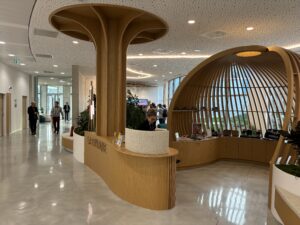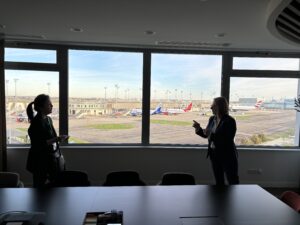Inside Airbus’ newest aircraft delivery centre
Airbus manages its aircraft delivery process to airlines and lessors through a network of specialised delivery centres worldwide.
With the ramp-up of production, the European plane manufacturer recently unveiled a…
Airbus manages its aircraft delivery process to airlines and lessors through a network of specialised delivery centres worldwide.
With the ramp-up of production, the European plane manufacturer recently unveiled a brand-new delivery centre at its Toulouse headquarters in southern France.
These centres play a pivotal role in facilitating the handover of newly manufactured aircraft to customers, ensuring a seamless transition from production to operation.
The delivery process involves meticulous coordination and adherence to strict safety and quality standards.
At these state-of-the-art delivery centres, Airbus conducts thorough pre-delivery inspections, functional tests, and customer acceptance checks.
These measures ensure that each aircraft meets the exact specifications outlined by the customer.
During a tour of the facility, Jill Lawrie, head of customer experience and relationship at Airbus, told FINN: “We have the capacity here for 12 transfers of titles in parallel – that’s the moment when the aircraft becomes the property of the airline or the lessor.
“Before, the building where we processed transfers of titles in was on the other side of the airport. By bringing them here to this building, firstly it’s a beautiful space to be in, but secondly, they are right next to the delivery centre and right next to the Final Assembly Line.”


Airbus has additional delivery centres in Hamburg and Mirabel, Canada, Mobile, US, and Tianjin, China.
“We are growing, we need more space and we need to be in close proximity with our customers,” added Lawrie.
The delivery phase typically is performed during four or five days, depending upon the aircraft type.
A standard delivery includes ground checks, including external surfaces and paint, bays and cabin visual inspection, static aircraft system and cockpit checks, engine tests.
Then comes the acceptance flight, involving checks of all systems (including the passenger cabin), and aircraft behaviour in the entire flight envelope.
Any physical rework is completed, and once all the checks are done it is time to proceed to the technical closure of the aircraft.
The documents attesting the aircraft’s compliance to the type certificate and conformity to technical specification are signed, allowing the issuance of the Certificate of Airworthiness.
The final steps are transfer of the aircraft ownership to the customer and preparation of the aircraft for the ferry flight to its home base.
Subscribe to the FINN weekly newsletter
















